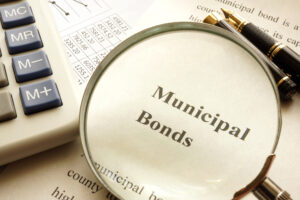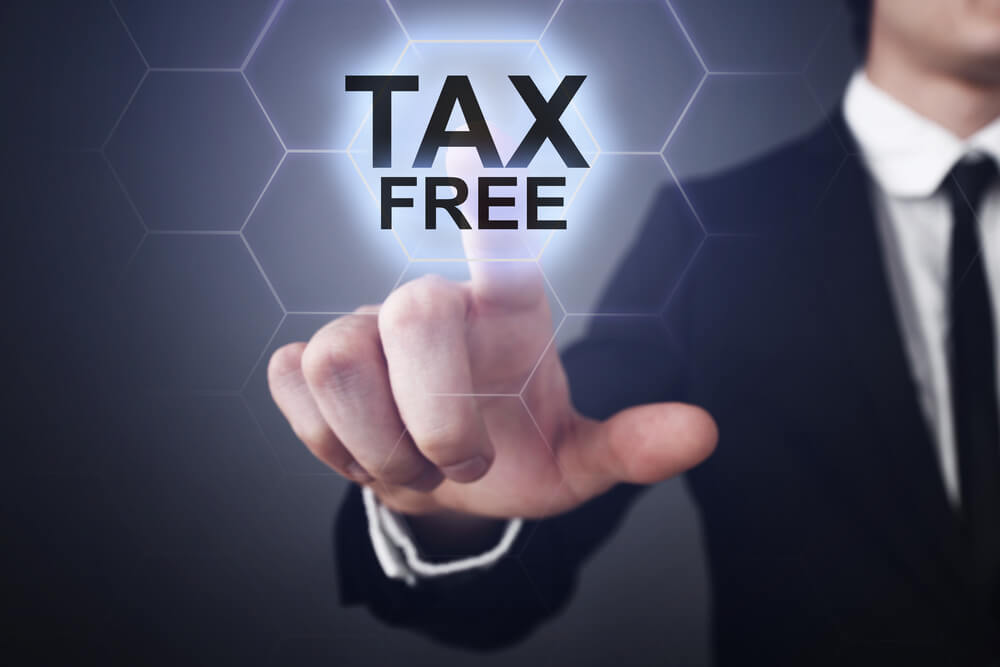I hate paying taxes. I hate it to the point of getting ideological about it, and I do everything legally possible to reduce my tax footprint.
I make the maximum contribution allowed to my 401(k) every year.
I dump money into a Health Savings Account.
And I keep track of every last penny of deductible business expenses.
 But one of the very best sources of tax-free money is municipal (muni) bonds.
But one of the very best sources of tax-free money is municipal (muni) bonds.
Here’s why.
Interest on bonds that cities, states and other levels of government issue are generally tax-free at the federal level. You have to report the interest earned on your tax return. But in most cases, you won’t owe a single red cent on it.
One easy option is to buy a portfolio of tax-free municipal bonds, hold them in your portfolio and call it a day.
But you can get better diversification, and often a higher yield, by buying a closed-end municipal bond fund.
As an example, take a look at the BlackRock Municipal 2030 Target Term Fund (NYSE: BTT).
BTT holds a portfolio of 549 tax-free muni bonds spread across 44 different states and countless cities, counties and school districts. The fund’s highest exposure is to Texas. About 15% of the portfolio is spread across assorted municipalities in the Lone Star State.
BTT yields 3.11% at today’s price.
That might not sound like a fortune, but remember: It’s 100% tax-free. And the more money you make, the more this matters.
The Value of Tax-Free Income
To see why this is a big deal, let’s take a look at tax-equivalent yield.
This is the rate you’d need to earn on a taxable bond in order to enjoy the same return after taxes:
| Tax Bracket | Tax-Equivalent Yield |
| 10% | 3.45% |
| 12% | 3.53% |
| 22% | 3.98% |
| 24% | 4.09% |
| 35% | 4.78% |
| 37% | 4.93% |
If you’re in a low tax bracket, there’s not a huge advantage to buying a tax-free muni bond. At the 10% bracket, BTT’s tax-free 3.11% yield is the same as a taxable 3.45% yield.
But once you start creeping into higher brackets, it matters. In the 24% bracket, the 3.11% tax-free yield is equal to a 4.09% taxable yield.
And in the 37% bracket, it’s worth 4.93%.
Now, most of us aren’t in that top tax bracket. To get there, you have to earn well over half a million dollars per year.
But the point is clear: The more money you make, the more important it is to legally hide it from the tax man.
A Capital Gains Kicker
I realize that sub-5% returns aren’t wildly exciting. But these are boring municipal bonds we’re talking about, not high-flying tech stocks.
All the same, we’ll likely see some capital gains in BTT before all is said and done. At current prices, BTT trades at a 7.28% discount to net asset value. In plain English, that means the fund is worth more dead than alive.
The bonds that the fund owns are worth more than the fund itself.
Here’s where it gets fun. BTT is scheduled to terminate in 2030. Ten years from now, the fund will shut down, and the shareholders will be cashed out at net asset value.
So, assuming the fund’s bonds don’t default, anyone buying BTT while it trades at a discount is guaranteed at least modest capital gains by 2030.
And in the meantime, you can keep collecting that tax-free income!
• Money & Markets contributor Charles Sizemore specializes in income and retirement topics, and is a frequent guest on CNBC, Bloomberg and Fox Business.
Follow Charles on Twitter @CharlesSizemore.





